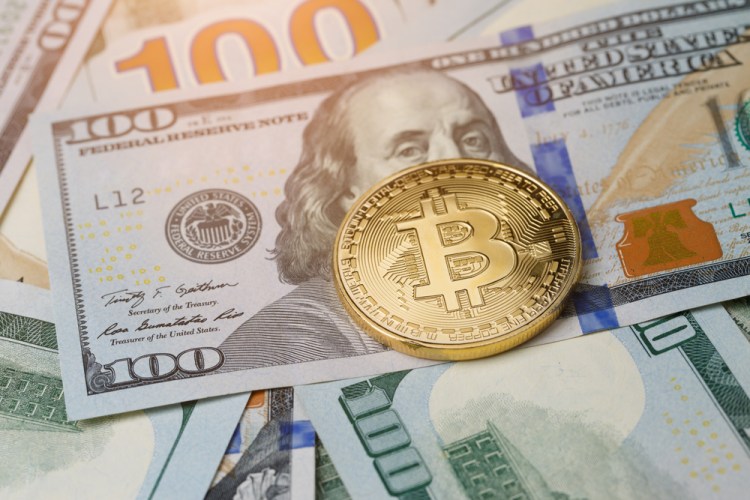One of the most prevalent blockchain use cases is the application of distributed ledger technology, and the associated tokens created through ICOs and token-generation events, to the world of finance.
Inlock today announced the global launch of its platform that matches licensed lenders with borrowers. Basically, Inlock pairs those with cryptocurrency holdings with those who want to borrow. In fact, Inlock lets licensed lenders compete for borrowers.
Products such as Inlock are a natural fit within a decentralized blockchain world and are indicative of how distributed ledger technologies can help the unbanked, and those with no access to credit.
“The advancement of developing countries is greatly limited by the complicated nature of current lending procedures,” Inlock CEO and founder Csaba Csabai told me. “Lending platforms similar to Inlock, built on an open blockchain, provide easily accessible development loans while helping locals adopt cryptocurrencies by enabling their use for daily financial activities.”
June 5th: The AI Audit in NYC
Join us next week in NYC to engage with top executive leaders, delving into strategies for auditing AI models to ensure fairness, optimal performance, and ethical compliance across diverse organizations. Secure your attendance for this exclusive invite-only event.
How does it work?
Borrowers choose the most competitive offers from lenders, which gives them the opportunity to avoid selling their cryptocurrency to finance a temporary liquidity problem. Excluding any interest payments, Inlock users pay every cost associated with borrowing and lending in ILK tokens. Because the platform’s usage costs are not deducted from collateral, borrowers can preserve the full value of their cryptocurrency upon repaying the loan.
“Inlock’s goal is to provide a platform where digital currency holders can use their crypto as collateral to take out fiat loans from institutional lenders,” Csabai said. “Due to the involvement of funds from traditional and accredited institutions, operating in a fully regulated environment is essential for Inlock.”
Importantly, Inlock’s lending model eliminates the need for additional credit assessment because the borrower provides the collateral in the form of crypto assets. The system uses smart contracts to ensure a level playing field between borrowers and lenders.
“Blockchain technology ensures trust, which is integral to P2P lending,” Csabai said. “We are planning for a future where regulators enable us to provide our services via P2P. Ultimately, we envision a world where Inlock will operate as a P2P platform, for which it is already designed. True market competition can only be realized via P2P. As soon as regulation unlocks the possibility of using advanced blockchain technologies such as Inlock, lending platforms that can provide real market competition will be the most valued.”
The ILK Token (an ERC20 token) governs the relationship between lenders and crypto holders. Inlock’s token sale goes live on September 15, with 4.4 billion tokens available for purchase at a rate of $1 for 100 ILK.
Inlock isn’t just for individual lenders. On the platform, banks and other licensed financial institutions can compete for customers, which ensures that interest rates remain as low as possible.
Of course, one of the complexities of any financial product is the regulatory process required to operate it.
“We have examined and created the necessary regulatory framework for Europe, which enables us to immediately offer loans in the EU after launching our platform,” Csabai said. “We also outlined these parameters in the LATAM region, and we are planning to open up offices in that region in Q4. We are committed to working on the ground in LATAM to ensure that we meet the necessary regulatory and compliance needs, as well as to establish partnerships that will help us flourish in the region.”
In contrast to many other financial products on the blockchain, Inlock is taking regulatory approval a step further.
“We have begun the licensing procedure of our PSD2-TTP service, which will enable us to involve any bank account (with any bank in all EU countries) in the credit process,” Csabai said.
The company also plans to open offices in a number of countries over the next year.
“Inlock’s goal is to create a global solution, which we intend to achieve in the following timeframes,” Csabai said. “In addition to the LATAM region, Q1 2019 will see us open in USA and Canada, and Q3 2019 sees us open in South-East Asia. We have ongoing negotiations with the UAE region about how we can tailor Inlock’s model to comply with local regulations.”
What’s next for Inlock?
“In the days leading up to the token sale going live on September 15, we will be focused on managing our whitelist registration to ensure that interested parties can secure access to the sale and platform,” Csabai said. “The ILK tokens distributed during the sale are needed for borrowers to take out loans on the platform. We are also actively developing the platform, which goes live in October and will be immediately available in the EU.”
Inlock has a live beta platform, available for testing via a live prototype from today.

